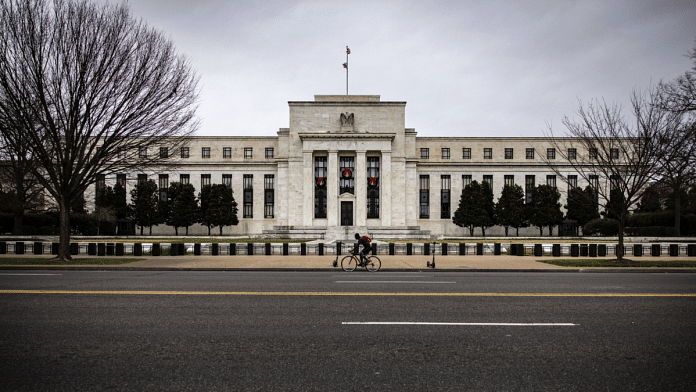A further spike in U.S. inflation in January — prices were 7.5% higher than a year ago, the fastest increase for 40 years — was the last the thing the Federal Reserve wanted to see as it weighed its next moves in monetary policy. It had led investors to expect a very gradual increase in interest rates starting next month. Already under pressure to move faster and more boldly, the central bank will now need to think hard about its plans and its messaging.
The new inflation numbers — surprising as they were to most analysts — don’t call for a wholesale shift in strategy. It’s still true that the economy is grappling with unprecedented supply-side disruptions as well as with last year’s incautious fiscal stimulus. If the pandemic subsides, as is widely expected, supply will recover and the economy will come into better balance. In other words, the spike in inflation will indeed prove transitory to some extent. The question is how much.
There’s surely cause for concern. Inflationary pressure is spreading beyond the sectors — such as used cars — that have seen the most startling increases in prices. The costs of food and energy, as consumers won’t fail to notice, are rising quickly. But so-called core inflation, which excludes those volatile components, also rose by 6% in the year to January, another multidecade record. Further increases in rents are likely as new leases are signed over the coming months. The labor market is tight, and though wages are going up more slowly than prices, they’re rising at close to 5% year-over-year, the fastest rate since 2002. What could be the beginnings of a wage-price spiral are apparent.
The Fed must also keep in mind that its previously advertised tightening would still leave monetary policy loose by ordinary standards. Its balance sheet is engorged thanks to pandemic-related bond buying, and even after interest rates lift off, they’ll still be substantially negative in real terms.
Those who’ve argued that the Fed has been behind the curve up to this point will claim further vindication, and the case for a much more abrupt tightening of policy would be easy to make. In due course, this might indeed be necessary, but as things stand it would be unwise. A tightening of policy that takes markets by surprise could crush asset prices and run the risk of pushing the economy back into recession.
The Fed needs to show it’s paying attention to the data and is alive to the risks of doing too much as well as too little. Investors are pricing in a somewhat faster rise in interest rates this year, and the Fed should take its cue from that. Open-mindedness, patience and gradualism remain the right strategy.
Also read: Why Federal Reserve will no longer have pandemic-era investors’ backs






